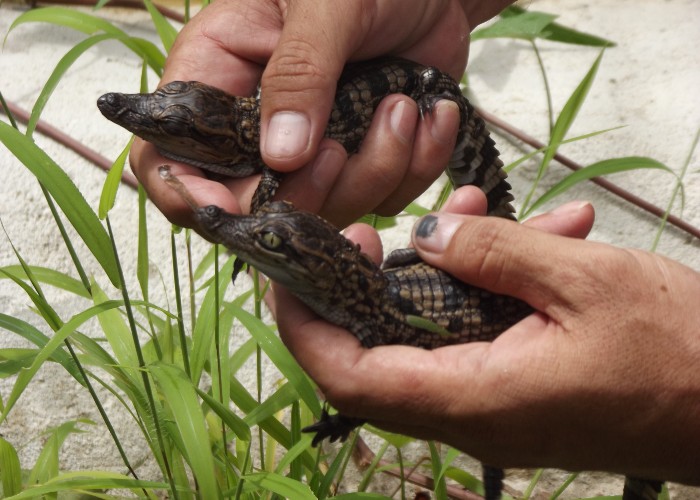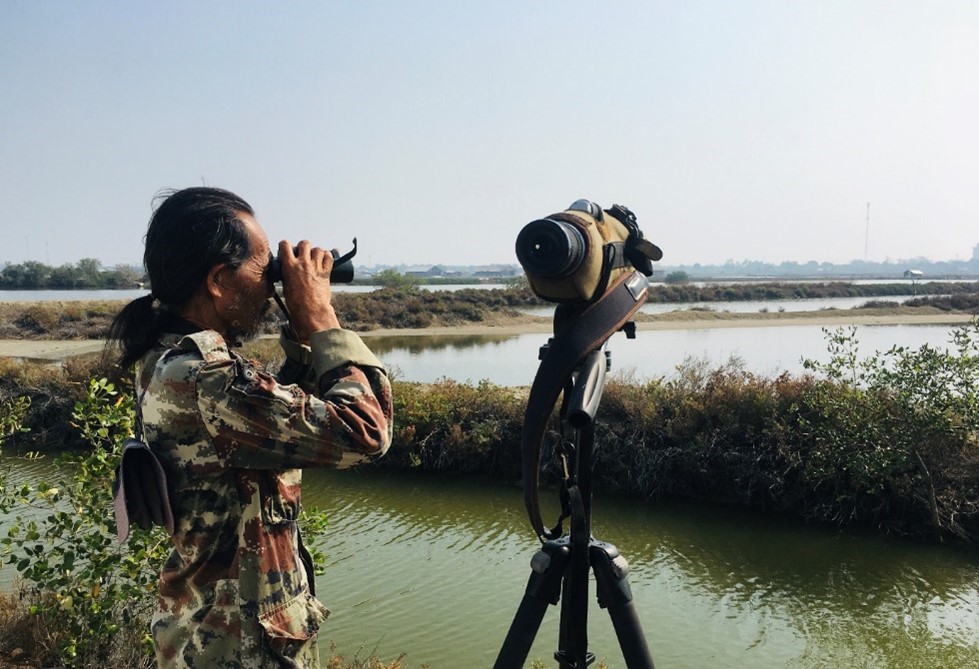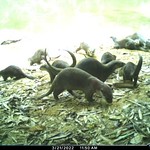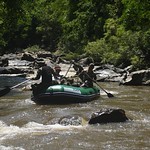Scroll Percentage: 0%
Large projects Thailand 2023
Safeguarding river ecosystems and coastal habitats to protect riverine species and migratory birds
Thailand conservation facts
Thailand is a biodiversity hotspot in South-East Asia and is home to an astonishing 15,000 plant species, representing 8% of the world's total? Ranking 20th in terms of biodiversity, many animal species, including mammals, birds, reptiles, and fishes, are at risk including 121 mammal species, 184 bird species, 33 reptile species, 5 amphibian species, 218 fish species, and 1,131 plant species. According to the IUCN Red list, Thailand is home to 671 threatened species.
Large Projects in Thailand
The Mohamed bin Zayed Species Conservation Fund oversees two significant projects in Thailand, both funded by Mubadala Investment Corporation and its local affiliate, Mubadala Petroleum. One project focuses on rehabilitating the wintering habitats of the Spotted Greenshank in partnership with the Bird Conservation Society, while the other, led by WCS, aims to conserve Thailand’s Smooth-coated Otter, Asian Small-clawed Otter, and Siamese Crocodile within Kaeng Krachan National Park.
Thailand Project Partners
The Fund manages both projects in cooperation with our local partners. They are:
The Bird Conservation Society of Thailand (BCST)
Saving the Spotted Greenshank (Tringa guttifer)
Established in 1986, BCST aims to raise awareness of the importance of birds, their habitats, and the natural environment and to support actions towards achieving sustainable development.
Wildlife Conservation Society (WCS) Thailand
Protecting Thailand’s endangered
Small clawed otters (Aonyx cinereus)
and Siamese Crocodile (Crocodylus siamensis)
WCS Thailand was established in 1980 with the objective of saving wildlife through science, conservation action, education, and inspiring people to value nature.
The Spotted greenshank project
Up to a quarter of the Spotted Greenshank population winters in Southeast Asia, particularly in Thailand, where they face significant threats. Coastal erosion, land use changes, and urban expansion pose serious risks, especially with the decline of salt pans due to fluctuating sea salt prices and rising labor costs. Many of these vital areas are being converted into aquaculture ponds and urban developments, leading to the loss of crucial high-tide roosting sites. This project aims to secure their wintering habitats through field surveys and monitoring of the migratory population.
Progress in 2022 and next steps
Field surveys in Thailand aimed at enhancing our understanding of the distribution of the Spotted Greenshank in the eastern Gulf of Thailand and Peninsular Thailand continued until October 2023.
The highest population of Spotted Greenshanks was recorded in Petchaburi, particularly at the Pak Thale-Lam Pak Ba key site, where a count of 249 individuals was observed in January 2023. Their preferred habitats primarily consist of traditional salt pans and some sandy-mud beaches.
BCST continuously collaborated with local stakeholders, including salt farmers and the Department of Marine and Coastal Resources (DMCR), to manage salt pans effectively, thereby creating and securing essential roosting and foraging sites for the Spotted Greenshank in Pak Thale.
Community engagement formed the foundation for conservation success, and BCST has successfully conducted tailored workshops focused on community action planning and project development. From November 2022 to March 2023, five sessions were held, involving 54 communities.
Ongoing discussions surrounding habitat management strategies to attract Spotted Greenshanks have included enhancing benthic fauna, particularly crab populations, within the managed areas continues.
"The hardest thing is educating people, explaining to them that this can benefit them in the long run."
Sae-ree Manich, Shorebird Survey Officer, BCST
Protecting the biodiversity of Thailand’s rivers
The Kaeng Krachan National Park (KKNP) was declared as a national park on 12th June 1981 and listed as a World Heritage Site in July 2021. No other protected site in the country has such a big variety of animals.
This project will focus on three key indicator species: the Smooth-coated Otter, Asian Small-clawed Otter, and Siamese Crocodile. It aims to provide robust scientific data on these species and their habitats while enhancing law enforcement capacities and establishing a framework for long-term conservation monitoring.

Progress in 2022 and next steps
To conserve the target species and biodiversity along the Petchburi River, effective law enforcement is essential to combat various threats originating from nearby villages. Increasing the number of park rangers, boats, and necessary equipment is crucial for robust protection in this core area. Coupled with ongoing community engagement, this approach should help mitigate human pressures over time, though the effects may not be immediate.
The head-start project represents one of the most promising interventions to save the Siamese crocodile from extinction. Currently, it appears that only one female crocodile remains in the Petchburi River, as our extensive searches have not uncovered any additional nests, and she has not successfully nested in over a decade. We must implement targeted interventions to enhance her survival prospects effectively and swiftly.
Photos submitted by the Wildlife Conservation Society Thailand
Manoon ‘Ki’ Pliosungnoen,
Conservation program Manager, WCS
"Effective protection, community engagement, and headstart projects are keys to the survival of the Siamese Crocodile in Petchburi River. The National Action Plan was also developed based on our findings"
BCST photo competition during Thailand Bird Fair
Greenshank workshops to educate local communities
Knowing the Nordman’s Greenshank webinar
Education holds the key to future success
New boat and equipment for SMART patrol teams
WCS targets locals schools through nature education campaign














